Meet the Indonesian boy, 11, who has become world-famous for his ‘aura farming’ boat race dance
Indonesia’s annual Pacu Jalur race has caught global attention after a clip of Rayyan Arkan Dhika dancing on a boat went viral.
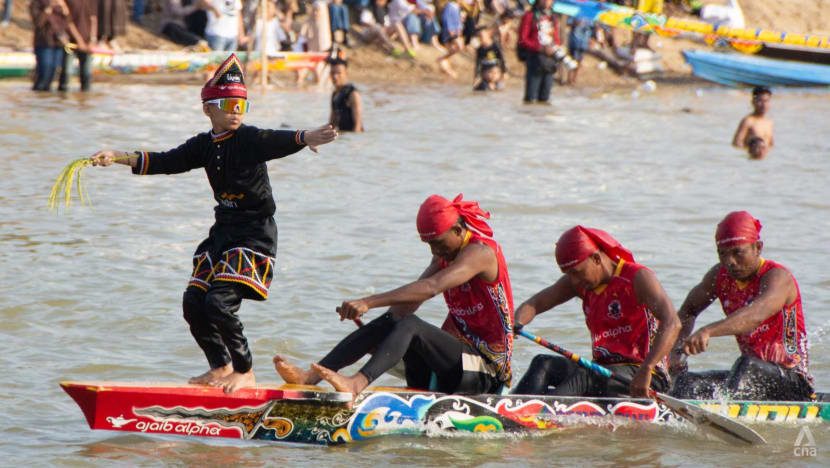
Rayyan Arkan Dhika, the internet sensation known for his dance performances at Riau's Pacu Jalur boat race, taking part in this year's race on Aug 21, 2025. (Photo: CNA/Yudhie)

This audio is generated by an AI tool.
KUANTAN SINGINGI, Indonesia: Indonesian Rayyan Arkan Dhika has become a global internet sensation for his cool “aura farming” moves perched at the tip of a traditional racing boat.
The 11-year-old from Kuantan Singingi regency in Indonesia’s Riau province has even been appointed a cultural ambassador by the governor of Riau.
Dhika owes his fame to a 20-second video clip of him wearing sunglasses and looking nonchalant while dancing on a boat during a Pacu Jalur race in his hometown.
Although the video was taken last year, it was only a few months ago that an edited version of the clip accompanied with American rapper Melly Mike’s Young Black & Rich song circulated on social media, and quickly went viral.
BBC called it “possibly the world's coolest dance” that is “full of swag”, and the Wall Street Journal described him as the “world’s coolest kid”.
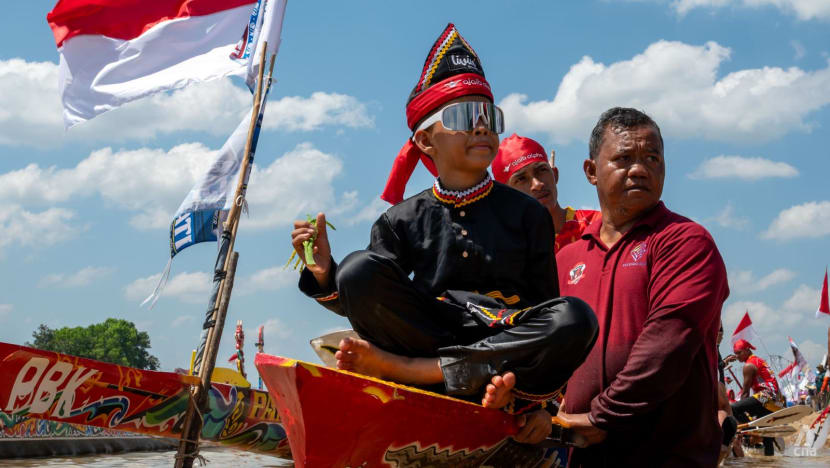
From AC Milan’s footballers to Formula One driver Fernando Alonso, many have replicated Dhika’s dance in their bid to show off some cool vibes, as the term “aura farming” indicates.
Many such clips, overlaid with various songs, have in turn garnered millions of views on their own.
That in turn has put much attention on the annual five-day Pacu Jalur race, which is currently taking place in Kuantan Singingi regency until Sunday (Aug 24).
Dhika is again taking part.
“I am happy,” he told CNA at the race venue on Friday, when asked how he feels about racing.
Dhika is a boy of few words, and barely speaks with the people surrounding him, giving a detached vibe similar to his persona in the viral clip.
He is set to perform with Melly Mike on Sunday during the event's closing ceremony.
When asked whether he is ready for the performance, he said: “Ready”.
There is no special preparation for it, he added.
Dhika also said there is no difference between this year’s competition and last year’s.
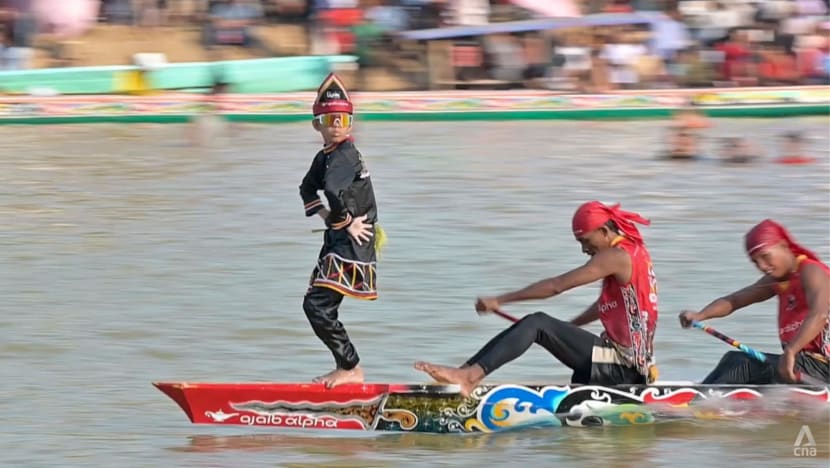
Dhika has been joining his father in the races since he was about eight or nine, and they train three times a week.
When CNA met Dhika on Friday, he had just got back from school to take part in the competition.
Looking tired, his family told him to take a nap before his team competes in the afternoon.
When they woke him up to get ready, he cried.
But his father, 40-year-old Jupriono, told him to stand up and wash his face, while giving him some words of encouragement.
“If you think about it, the child is probably tired. He doesn't get any rest,” said Jupriono, who also takes part in Pacu Jalur as a rower.
“But as a parent, I want my children to be more successful (than me).”
Dhika’s team lost on Saturday, so it did not make it to Sunday’s final.
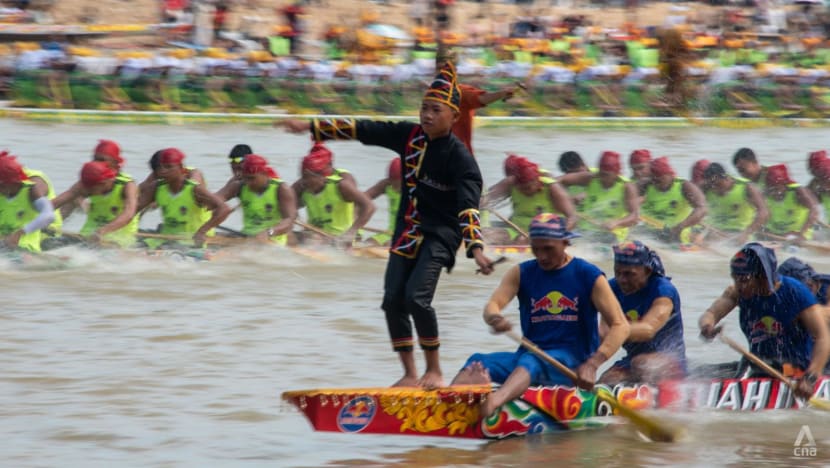
WHAT IS PACU JALUR?
Pacu Jalur is a traditional longboat rowing race unique to Kuantan Singingi, said the head of the regency’s tourism and culture department Azhar, who goes by one name.
It dates back to the 19th century, when locals, mostly working as traders and living along the regency’s Kuantan river, used longboats for transport and work, he told CNA.
Locals used to race to see who could get to the market the fastest and sell their goods. Over time, it became a real race.
During the Dutch colonial era in the 1800s, it marked the birthday of the Dutch Queen Wilhelmina.
However, after Indonesia’s independence in 1945, Pacu Jalur, which means wooden boat race, is held every August to celebrate Independence Day on Aug 17.
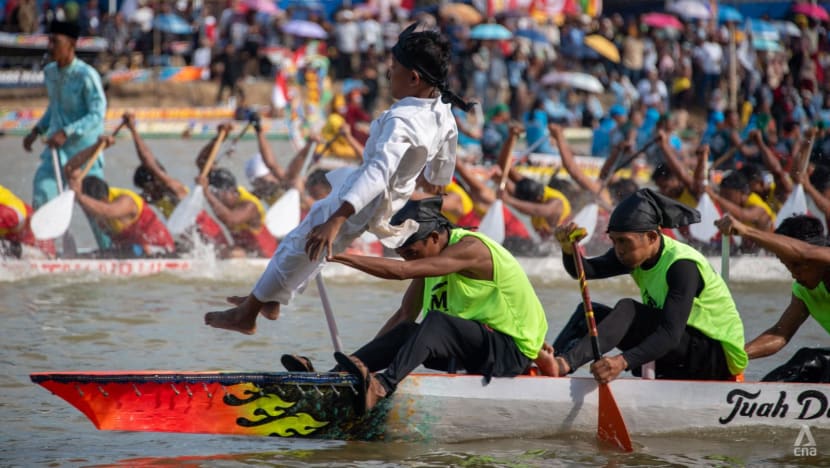
To take part in the race, a team of 40 to 70 male rowers use a wooden boat which is 25m to 40m long.
This year, 228 teams are competing to win the grand prize of 140 million rupiah (US$8,550), said Azhar.
Two boats will race against each other over about 1km, with the winner advancing to the next round.
Every boat has a dancer, called anak joki in the local language.
When a boat is leading, the dancer will usually stand up and perform some dance moves to signal this to the rowers and spectators.
This means the dancer has to be relatively light so that the boat can remain balanced, which is why most dancers are young boys like Dhika.
They usually wear Malay outfits as Kuantan Singigi’s culture is predominantly Malay.
Keeping the body balanced at the tip of a racing boat is not an easy task.
As CNA witnessed during the event, some dancers fell from their boat and had to swim to the riverside or were rescued by search and rescue teams.
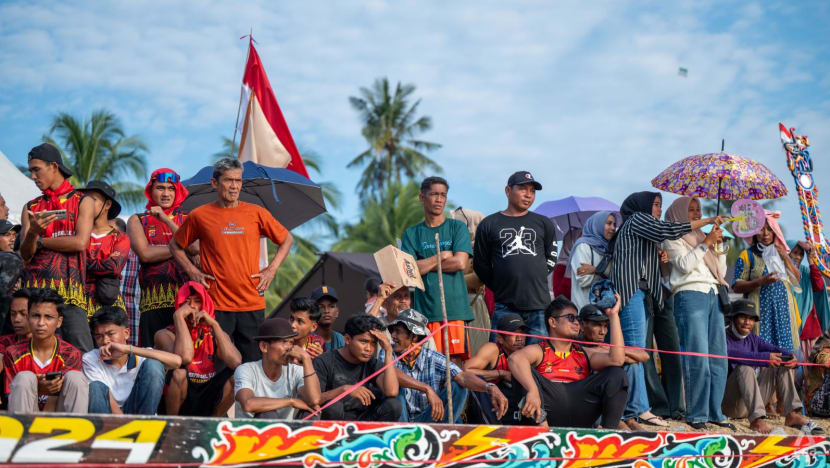
Equally challenging is being a rower, and one has to practise at least three times a week.
But the hard work pays off when they win, said rower 24-year-old Mulya Putra, who is in Dhika’s team.
“Our best achievement is winning the second spot, which was in 2015,” he said.
While Pacu Jalur has always caught the attention of locals, this year it is a global event with foreign dignitaries and influencers flocking to the regency of 360,000 people.
Azhar, the head of Kuantan Singingi tourism and culture department, said he did not expect the event to become this popular.
“We were very shocked. We didn’t expect to become this viral.”
Thus, unlike previous years, local authorities decided to make the event more spectacular.
A large Indonesia national red-white flag is displayed along the Kuantan river where the race is held and Vice President Gibran Rakabuming Raka attended the opening day.

GOING VIRAL AND IMPACT ON LOCALS
Last year, about 1.4 million people attended the race.
Authorities have high hopes that this year’s event will draw similar numbers and have a ripple effect on the local economy.
The theme of this year’s event is: Pacu Jalur going global, micro, small, and medium enterprises are increasingly prosperous.
Azhar said that if one person spends at least 100,000 rupiah per day, the event would generate at least 100 billion rupiah.
Twenty-year-old Dwita Federentina, an iced tea seller is among those hoping to cash in.
Despite being from Riau’s capital Pekanbaru, some 170km or five hours drive away from Kuantan Singingi regency, she decided to set up a small stall at the Pacu Jalur venue on the suggestion of an acquaintance.
“Thank God people buy my drinks. The money is better here,” she said.
She earns about one million rupiah per day, which is five times her daily earnings in Pekanbaru.
Yesi Sarwina, 40, hails from the same village as Dhika, Pintu Gobang.
She has been selling drinks and snacks at the annual Pacu Jalur event for years, and said this year’s crowds are much larger than previous years.
“Hopefully, the following years will attract even bigger crowds… and locals can earn more income.”
She managed to earn about 1.5 million rupiah daily this year, compared to about 1 million rupiah last year.
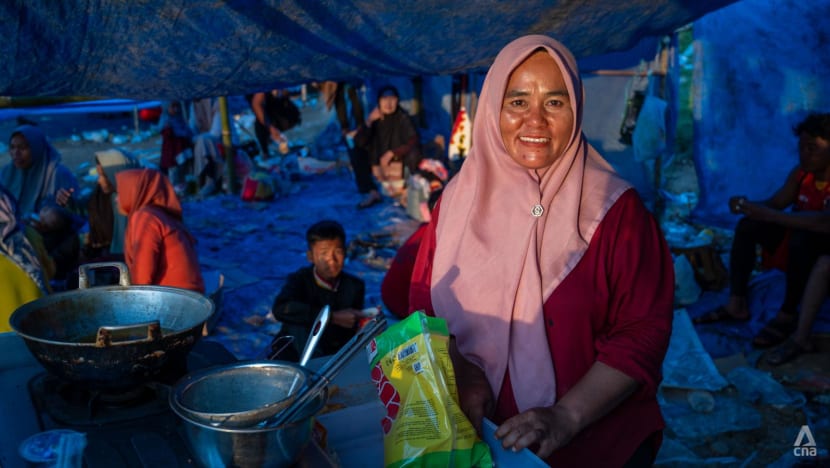
However, she noticed that with the big crowds also come negative consequences, such as littering.
Azhar says much needs to be improved in the upcoming years, including building more hotels, as the regency lacks proper ones.
For now, everyone is happy about the global attention, including Dimas Eka Yuda Prasha, the 24-year-old videographer who uploaded Dhika’s video on social media.
The video he put up on his Facebook account has now garnered about 58 million views.
“A lot of boat dancers are good,” he said.
“But it is Dhika’s luck that has put Kuantan Singingi, Riau, Indonesia, on the global map, and hopefully it will continue (to attract attention).”
















